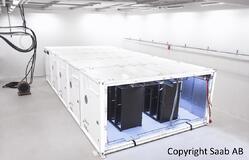
According to the United Nations Environment Program (UNEP) in relatively recent times (2008) the human civilisation crossed a landmark divide with half the global population now living in urban areas. Fifty years ago it was 30%. A century ago it was 10%.
This rush to urbanisation puts untold pressure on planning for a city’s growth and for the purpose of this blog post, the utilities that provide services like water, sewage, and energy to these urbanized populations.
On top of growing urbanized populations, changes in the manipulation of big data, more sophisticated software and technology advances are increasing the need for utilities around the world to develop scalable data center solutions.
The breadth of functionality in the use of data systems has immeasurably increased along with the heightened security demands.
In organisations like utilities, where the demand on data systems is rapidly expanding, flexibility and scalability in the expansion of data management on timely and economically manageable terms is vital.
If you are building a data center for a utility where you know you will need to expand over the next ten years, you can end up building a data center much larger than the one you now need at the time because of the need to include future capacity. The ultimate solution is to upgrade your capacity as you need it, and that is where Datapod provides an industry accepted solution.
We calculated that designing a 1 MW system that would be adequate in 5 years would accumulate cost paying for unused capacity up to $15 million over the 5 years. The alternative is to add capacity as you need it. If you keep adding capacity as you need it, accumulated savings could be estimated at $4 million let alone the reduction in energy use and related carbon emissions.
The data processing industry has been growing rapidly. KPMG research suggests that the data universe doubles in size every two years. They say that it will reach 40 thousand exabytes (40 trillion gigabytes or enough to store 50 thousand year’s worth of DVDs) by 2020. Furthermore, the Environmental Protection Agency, state that data centers accounted for between 1.7% to 2.2% of all electricity used in the U.S. in 2010. Which makes scalability through a modular approach even more attractive.
Modular data centers and cloud or colocation systems offer alternative ways of coping with increases in data use demand. The route of modular data centers for utilities is perhaps uniquely favored by the particular security and privacy needs utilities present.
Since both cloud computing and colocation options are external forms of computing, both are less secure than a data center that is owned and managed by the organisation. Cloud computing can rely on servers spread over several locations, each of which has to be entrusted with its own security and privacy functions.
A utilities own modular data center could be directly linked to its local area network which can only be accessed by its own authorized personnel. Cloud and collocated systems have multiple entry points that present difficult security and privacy challenges.
Datapod has deployed modular data center solutions for organisations in Australia and is soon to deploy their first in the United States.
If you would like to learn more about how the modular data center approach could benefit your organisation please contact us.
Alternatively, visit our Datapod Resources Page for more information about Datapod’s modular data center system.